The princely state of Alwar has a long and ancient history dating back to the Mahabharata era when it was a part of the Matsya Kingdom that included Bharatpur, Dholpur, and others. When the Pandavas were defeated and banished to the forest, Bheem was given the task of finding a location where they could spend their days in exile and a source of water. He thus set off on the mission and reached Pandupol, which is inside the Sariska Tiger Reserve at a distance of around 15 km from the entrance. Here he came across Lord Hanuman. A huge reclining monkey blocked his path. At that time he did not know his identity. Bheem asked for a way through, but his tail blocked the path. The monkey replied, “I am old and more than tired. You lift the tail and go through.” Despite Bheem’s immense physical strength and power, he was unable to even move the tail, let alone lift it. Bheem realized that he was in the audience of an extraordinary person. With folded hands he said, “Maharaj, kindly give your introduction.” Lord Hanuman then revealed his identity and inquired about the purpose of Bhim’s visit. Knowing that he was on the lookout for a source of water and a suitable place for their exile, he pointed out in the direction of a hill, saying that if you punch that hill, you find the source of water and also gave them the reference of the Jungles of Viratnagar, where they could spend their days in exile. Bheem then struck the hill with all his might, which created a hole in the surface that led to the Bharatiya water reserve. A very famous temple of Lord Hanuman was just in the area, which is frequently visited by the devotees with special prayer meetings on Tuesdays and Saturdays. The route to the shrine is through the entrance gate of the Sariska Tiger Reserve.
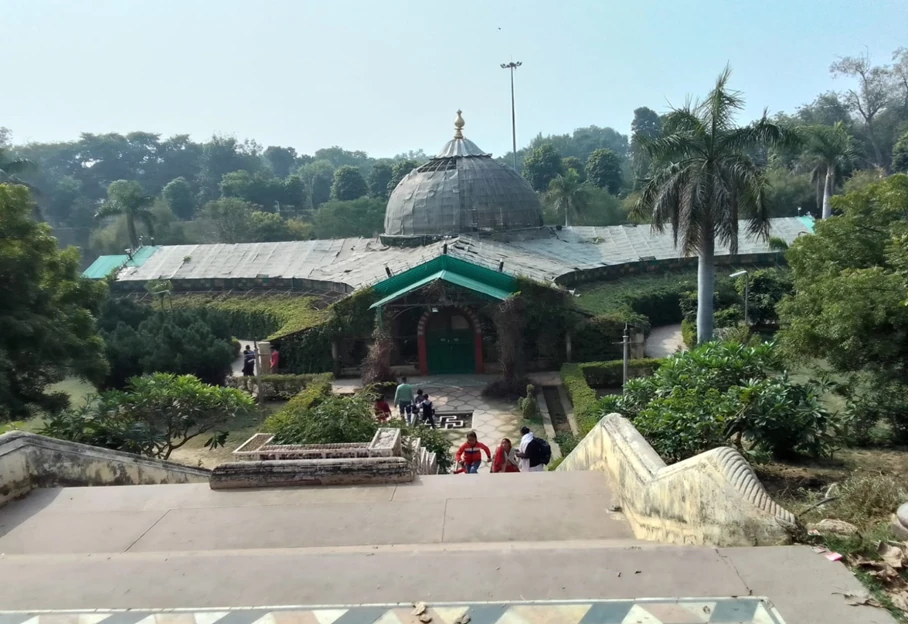
Thus, on these two days, public access to that area is free. On other days, a very substantial amount of entrance fees is charged, along with an additional charge for the vehicle.
Before independence, the Rajputana province had a large number of princely states, prominent among them being Jaipur, Jodhpur, Bikaner (famous for Maharaja Karni Singh, who was a member of the national shooting team for a few decades, during which he never won a medal), Jaisalmer, and a number of other smaller states. In 1947, all the states merged with the country and lost their status as independent states. Alwar thereafter became part of Rajasthan, which was earlier known as the Rajputana province during British rule. Several rulers have ruled the state, but prominent amongst them is Raja Tej Singh, who assumed rule and became the ruler in the 19th century. He belonged to the Kachwaha faction of the Rajputs. His rule is significant because of his relations with the British rulers; at that time, the influence of the British on internal matters was on the rise. The British ruled through the East India Company, which meant that for their survival, the states had to show their loyalty toward the Brits. The rule of Maharaja Tej Singh is important because of his strong personality and show of might toward the Rajputs against any forceful implementation of the Brit’s wishes. The stubborn attitude of Maharaja Tej Singh nearly forced the Brits to resign. However, the resolution of this matter allowed Tej Singh to continue as a ruler, and India’s independence was imminent. This was also the time when other states of Rajasthan had raised their voices against the forceful implementation of the British wishes in the internal matter.
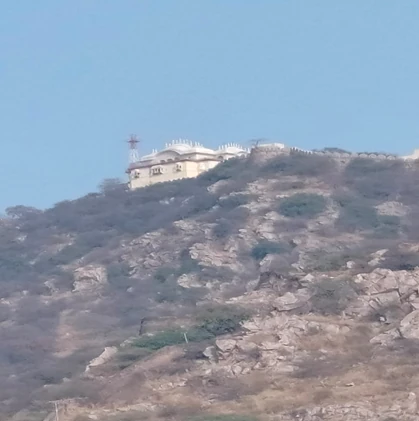
Raja Jai Singh was another popular ruler of Alwar state. During his rule, several important developments took place. It was during his time that the famous famine in the country happened; people had no jobs and were starving. Raja Jai Singh did not believe in charity but initiated several development projects in the state that employed people so that they could earn their living. Irrigation was a major need in the state, and he got the survey of the water sources done to identify the catchment areas in the Aravalli Hill range. Siliserh Lake was already in existence as a major reservoir of water. Jai Singh got this further connected via canals to other reservoirs in the chain. Jai Singh built a dam at Jaisamand, a water reservoir, to ensure a controlled supply of water for irrigation. Further extensions of the canal led to the two major water reservoirs in the Lal Diggi and Sagar areas. Along the route were built water purification systems so that only clean and pure water reached the reservoirs. The clarity of the water was such that a coin dropped in the water was clearly visible from the top.
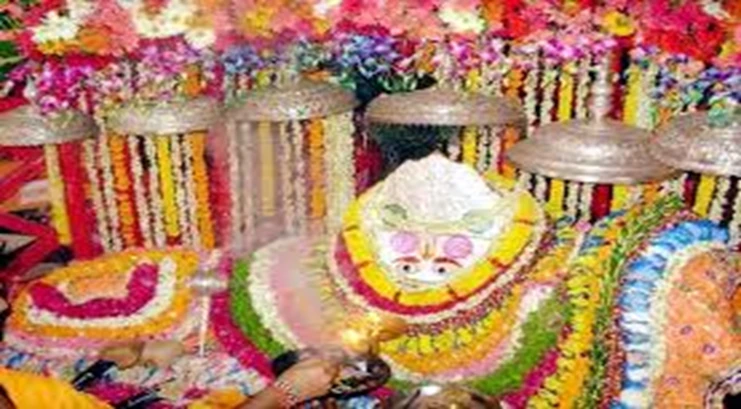
Maharaja Jai Singh was a talented sportsman and fond of shikars. The nearby forest areas of Khushal Ghar and Narayani, located on the bank of a river, used to host his shikar trips. There was a Kutiya (hut) of a sadhu named Baba Hera Nath, which used to bother Jai Singh, and he wanted it to be removed. His people told him that the Sadhu was indeed a saintly person known to have divine powers, and he should be left alone and not disturbed. Jai Singh was fond of polo. His hands were extraordinarily long and reached his knees. His long reach enabled him to reach for the ball before his rivals could. And that made him a leading polo player on his team. In a match in England when his team was losing, he suddenly thought of Sadhu Baba Hera Nath, and during the recess in a short meditation, he appealed to the sadhu for help. When the match resumed, he saw the sadhu sitting in the audience with his hands raised in ashirvadh. The trend of the match suddenly changed with his team being the ultimate winner. After the match, when he went looking for the sadhu, he had vanished. He was surprised, as he never believed in chamatkar, miracles, or telepathy. For him, ‘Seeing is believing’ was the motto. Raja Jai Singh had his own private plane and returned to Alwar and went straight to the sadhu’s hut and was surprised to find the sadhu. With folded hands, he said, “Maharaj, did you go to England?” The sadhu smiled and replied, “Are you here to do a test on me?”
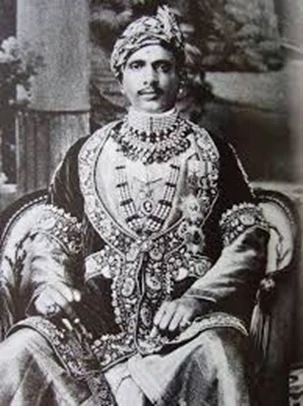
Maharaja would often go to Shikar in the jungles of Narainpur, where Kushalgarh Fort now exists. This is where the MIA (Matsya Industrial Area) is also located. A camp used to be set up here whenever Maharaja Jai Singh went on a shikar trip. A statue of Black Hanuman located in the area would often bother him, and he contemplated having it removed. Once when the camp was set up, hundreds of monkeys invaded the camp and destroyed everything, leading to the Shikar trip being cancelled. Jai Singh then complained to Baba Hera Nath about what had happened. Baba Hera Nath advised Jai Singh to shed his aversion towards Black Hanuman and relocate the statue to a suitable location on the banks of a river close by. Accordingly, Jai Singh built a temple where the statue of Black Hanuman was installed. In due course the temple became a popular place, drawing hundreds of devotees who would offer prayer and seek blessings.
The Alwar State had its own armed forces. They were known as Jai Paltan and Pratap Paltan. Prior to their formation, a unit known as Alwar Lances participated in World War 1. Both Jai Paltan and Pratap Paltan were identically organized with a mixture of infantry and cavalry elements and were armed with rifles, stun guns, and live machine guns. When World War II started, both of these Paltans were enlisted in the Indian Army, became part of the Rajputana Rifles, and were equipped like any other infantry battalion in our army. Both of these battalions saw active warfare in the Western sector against the Germans when the war ended. A company from one of the battalions had revolted against the British, for which the entire company was court-martialed and put up in various jails in Pakistan. When India gained independence, the Muslim soldiers among them were absorbed by the Pakistani army, while others were mainly released from jail and came back to India. Sadly, no one bothered about them, and they lived their life in anonymity. They did not even receive any pension for the services they performed during the period they served in the Indian Army. Compared to them, any freedom fighter who spent a few days only in jail was duly awarded when the country became independent.
An interesting story about a soldier of Jai Paltan is worth recording. When Mamraj initially joined Jai Paltan, he was on the personal staff of Tej Singh, the Maharaja of Alwar State, and accompanied him wherever he went. Sometimes Hasti, who was the state wrestler, would also go along with them. Hasti would often tease Meet Mamraj by elbowing him. Once or twice, the Maharaja witnessed this behavior and subsequently questioned Mamraj about why he didn’t object to such harassment. Mamraj replied, “Hukum is senior to me in age, and I do not have any problem with him on this account.” The Maharaja then decided to resolve the issue and determine who was number one between the two. The Maharaja arranged a wrestling bout. Mamraj had no option but to agree and seek the advice of his Ustad. The Ustad provided him with two key pieces of advice.
- Do not let Hasti grab you—he has strong arms and will not let go.
- Your strength is in your hands. Try to grab his hands and interlock his fingers. If you can do this, the rest will be easy.
Mamraj remembered this advice, and when the bout started, Hasti would try to grab him, and Mamraj would wriggle off his hold and get himself free. For some time it looked like Mamraj was running around in the Akhara and Hasti was trying to grab him. Raja Tej Singh then asked Mamraj, “Why don’t you stand up and fight?” A few close bouts followed, and Mamraj somehow managed to grab both his hands in his grip and interlock his fingers. It was now the turn of Hasti to try and free himself from the vice-like grip with which Mamraj held him. In a swift move, Mamraj overturned Hasti, who fell flat on his back. Hasti had broken both his wrists. It took 6 months for Hasti to become fit, but his career as a wrestler was over, and he retired for good.
Meet Amar Singh Yadav, a 5th-generation army veteran, along with his four other brothers, who also served in the Indian Army. His father and their ancestors had, in their time, served in the Indian army. One may wonder why the chain did not continue to the next generation. The reason is related to Amar Singh’s cardiograph when those selected for the 32 IMA course could not join the IMA for training. He passed the SSB interview but failed the medical test due to a seemingly unnecessary argument with the medical officer who was conducting the test. Nothing happened to the doctor, but Amar Singh’s career was sealed for good. The 6th generation thus did not take off, as none of his three sons showed the army as a career.
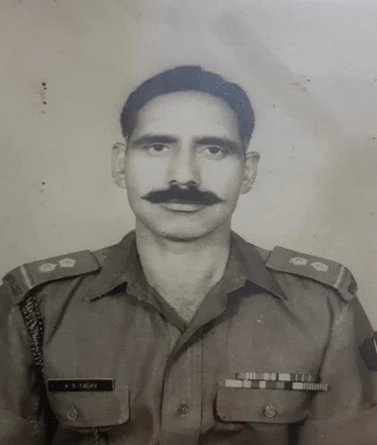
Amar Singh had a fascinating career, though. As a serving soldier, he received permission to enroll as a regular student at the SD College in Ambala, from which he graduated. He earned the nickname “Done Sahab” within his unit. The reason for this was that whenever he was given a task, he would respond with “Done, sir,” ensuring that he performed it to the best of his ability. It was this positive issue that had endeared him to his senior officers, and he was a popular figure in his unit. His nomination in the army was a result of the reputation he had built with his superior. Unfortunately, his indiscretion prevented him from taking advantage of this rare career lift.
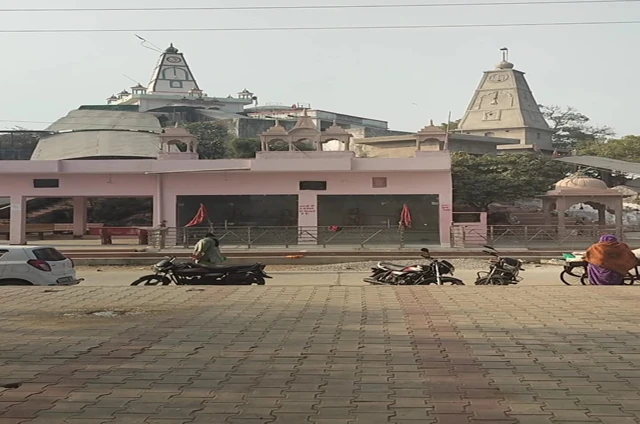
Among the many fascinating places in the state of Alwar worth visiting is Bibirani Temple, which is located around 15 km north of the highway connecting Alwar town with Bhiwadi. The story goes that around 600 years ago, a banjara was passing the spot in the late hours of the evening when he heard a voice asking what he was carrying in the sack. The banjara was carrying saffron in the sack, which was a pricey commodity then too, and he got scared, thinking that it was a thief who was inquiring. He replied that there was salt in the sack I was carrying. When the banjara reached home and opened the bag, he was horrified to find that it actually contained salt and all the saffron had disappeared. The banjara then realized that it was not a thief but a divine voice he had heard. The banjara then returned to the same spot, bent down on his knees, and with folded hands, admitted that he had made a mistake. The voice then again cautioned him on the virtues of telling the truth and blessed him that he would get his saffron back. The banjara then got hold of his family together and built the temple overnight where it stands today. When he went back home and opened the sack again, he saw all the saffron was there, intact. Since then, the temple has grown into a major complex where a large number of devotees come to seek blessings from Mata Bibirani. Major fairs are held twice a year in the summer and winter, which are visited by a large number of people. Also located around the complex is a pond, and the belief is that if a person with a skin disease takes a dip in the pond and then offers prayer at the temple, his ailment is cured forever.
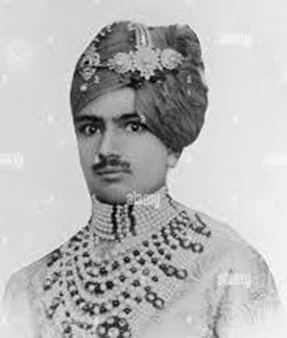
Tej Singh was the last ruler of the Alwar state, who ascended the throne after Jai Singh was deprived of it by the British for various reasons. It is said that he was a distant cousin of Jai Singh, but the real story shows that he was not born into a royal family but belonged to a Gaderia family (cattle breeders). An intriguing story that has come to light states that he was very careful about his money and did not believe in wasting it. It was in an incident that a person on the personal staff of the royals approached Pratap Singh (son of Tej Singh) with the news that the marriage of his daughter was fixed. Kanwar Pratap Singh showed his happiness at this news and gave Rs 1100 so that he could perform his daughter’s marriage well. The man thought to himself, “Why not approach the Maharaja for his blessings too?” He thought the Maharaja would be more generous than his son. When he presented the Maharaja with the marriage news, the instant reaction of the Maharaja was, “Really? Where is the money? Show me!” The man opened his palms with 1100 rupees in them. The Maharaja picked up ten notes, leaving a 100-rupee note behind, and said, “Kanwar Sahab has a habit of wasting money like this. This is enough for you.” The man then dismissed him. The poor man lamented himself for his indiscretion and went back to Kanwar Pratap Singh and informed him of what had happened. Kanwar Pratap did not like what his father had done and told him to give the money back, saying, “I am a son of a raja and would like to behave like one, but you are a son of a Gadaria. Your mindset has still not changed. Give me the money back and a thousand rupees from your side too as a goodwill gesture so that the man can perform the marriage of his daughter well.” The man went back happily, having enriched his bounty from 1100 to 2100 rupees. To put this amount’s value into perspective, at 25 rupees a tola, he could have purchased 1 kg of gold with it!

The state of Alwar and its heritage apart, the town of Alwar by itself is an intriguing place, worth visiting. If one is going to Jaipur for tourism and is not in a hurry, the route via Alwar is a very viable option. From Gurgaon, take a left turn on the Alwar highway that passes through Sohana, Firoz, and then Alwar City. You reach the famous industrial area MIA (Matsya Industrial Area). After traveling for approximately 10 km, the Alwar Fort becomes visible. Continue your journey until you reach the Alwar Railway Station. The construction of a flyover at this location dates back many years. The places worth visiting around the town are Lal Diggi, Sagar, Moosi Maharani ki Chhatri, and a few others. Before I forget, the town’s restaurants are where you first try authentic Rajasthani food. Additionally, for those with a sweet tooth, numerous sweet shops are offering a wide range of delectable Rajasthani varieties. Alwar is renowned for its preparation of Ghewar, a dish only available during the rainy seasons.
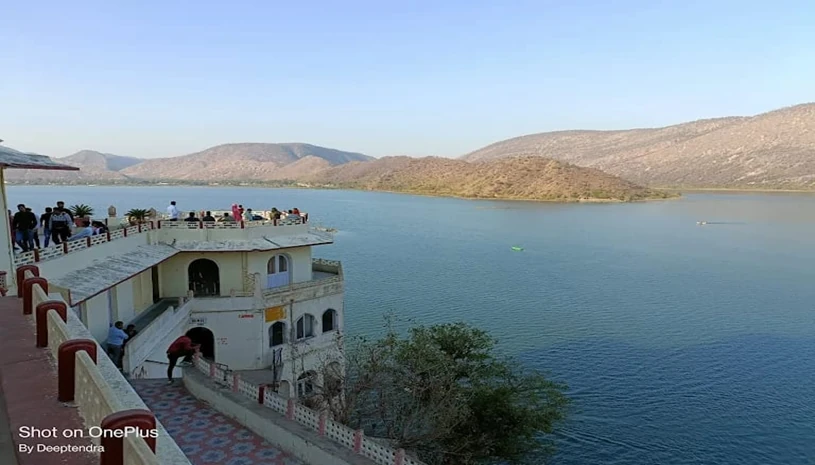
If you don’t wish to visit Alwar town, a bypass exists that takes you to other interesting places in the state, like Jaisamand, Siliserh, and Bala Quila, where the shooting of the famous film starring Shah Rukh and Salman Khan, titled Karan Arjun, was held. The shooting lasted for about a month. As you continue your journey along the Jaipur highway, you will encounter the renowned Sariska Tiger Reserve, which should serve as your final destination before you continue along the picturesque rolling hills of the Aravalli mountain range and rejoin the Jaipur highway. Have a wonderful tour.
